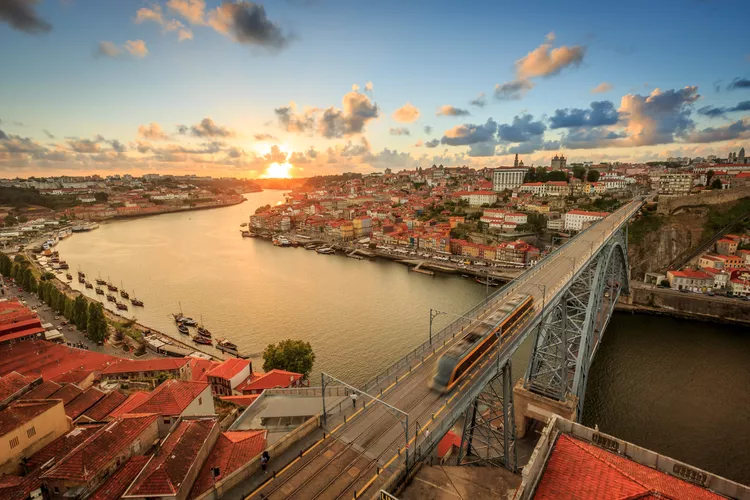
Month to Month: Unpacking Portugal’s Weather
Portugal is a country of contrasts, not just in its landscapes but also in its weather. From the sunny Algarve beaches to the mountainous regions in the north, Portugal offers a diverse climate that can cater to a range of preferences. But as with any travel destination, understanding the weather is key to making the most of your trip.
When is the Best Time to Visit Portugal?
If there’s one takeaway from exploring Portugal’s weather, it’s this: timing is everything. The best time to visit largely depends on what you’re looking to experience. For most travelers, spring (March to May) and fall (September to November) are ideal. During these shoulder seasons, the weather is pleasant without being overwhelmingly hot, and you’ll avoid the high-season crowds that flood popular destinations like Lisbon, Porto, and the Algarve during summer.
Spring brings blooming flowers, mild temperatures, and the perfect conditions for outdoor exploration. Whether you’re hiking in the Douro Valley or strolling through Lisbon’s historic neighborhoods, the crisp, fresh air makes every moment enjoyable. Autumn, on the other hand, offers cooler evenings and a landscape painted with golden hues, ideal for vineyard tours and quiet coastal getaways.
But if you’re a sun seeker looking to soak up the full force of Portugal’s Mediterranean climate, summer is your season. From June to August, temperatures soar, especially in the southern Algarve region, where the mercury often hits the mid-30s°C (90s°F). Coastal towns buzz with energy as tourists flock to the beaches, and the ocean provides a refreshing escape from the heat. Just be prepared for packed beaches and busy cities during these peak months.
For those who prefer quieter, cooler days, winter (December to February) offers a different perspective on Portugal. While the coast remains temp, with temperatures ranging from 10°C to 15°C (50°F to 59°F), the interior can be chilly, especially in the northern regions. Winter is the time to experience Portugal’s charm without the crowds—picture misty mornings in Porto, cozy evenings in the Alentejo, and a chance to explore the country’s rich cultural heritage at a slower pace.
Where is This? A Geographical Overview
Understanding Portugal’s climate also means understanding its geography. Positioned on the Iberian Peninsula, bordered by Spain to the east and the Atlantic Ocean to the west, Portugal’s location shapes its weather patterns. The country stretches from the northern Minho region, known for its verdant hills and cooler, wetter climate, down to the sun-soaked Algarve in the south, where Mediterranean warmth dominates.
The coastal regions, particularly along the western Atlantic coastline, are influenced by the ocean’s moderating effect, resulting in milder winters and cooler summers. Inland areas, such as the Alentejo and the Douro Valley, experience more extreme temperatures, with hot, dry summers and colder winters. As you move further north, the climate becomes more temperate and rainy, especially in regions like Porto and the Minho.
This geographical diversity means that you can experience different weather within just a few hours of travel. Whether you want to surf the wild waves of Nazaré, hike in the Serra da Estrela mountains, or relax in the balmy Algarve sun, Portugal has it all.

Does Portugal Get Snow?
For those wondering if Portugal ever sees snow, the answer is yes—but only in certain regions. Snow is a rare sight in most of the country, particularly along the coast where winters are mild. However, in the mountainous regions of the north, such as the Serra da Estrela, snow is not uncommon during the winter months. In fact, Serra da Estrela is home to Portugal’s only ski resort, offering a unique experience for those looking to enjoy a winter wonderland in an otherwise Mediterranean country.
The higher altitudes in the north, combined with cooler temperatures, create the perfect conditions for snow to fall between December and February. This makes Serra da Estrela a popular destination for those who enjoy winter sports or simply want to see a different side of Portugal’s diverse climate. It’s a stark contrast to the sun-drenched Algarve, proving that Portugal’s weather can be as varied as its landscapes.
Is Portugal a Hot or Cold Country?
One of the more common questions about Portugal’s weather is whether it’s a hot or cold country. The answer isn’t as straightforward as you might think because Portugal is both. In general, Portugal is known for its warm Mediterranean climate, particularly in the southern and coastal regions where sunshine and mild temperatures dominate much of the year.
However, calling Portugal simply a “hot country” wouldn’t do justice to its climatic diversity. While the Algarve may experience scorching summer days, northern Portugal can be significantly cooler and wetter, especially during the winter months. Regions like Porto, Braga, and the Serra da Estrela mountains often experience a temperate climate with more rainfall, especially compared to the dry heat of the Alentejo or the Algarve.
Portugal is a country that can offer warmth and sun for those who seek it, but also cooler, refreshing climates for those who prefer milder weather. Whether you’re chasing the sun or looking for a cozy winter escape, Portugal has something to offer for every preference.
Embracing Portugal’s Climate Diversity
Portugal’s weather is as varied and captivating as the country itself. From sun-soaked beaches to snow-dusted mountains, Portugal is a land of contrasts, where each region offers a different experience. The key to enjoying Portugal to its fullest lies in understanding its climate and planning your visit accordingly.
Whether you’re dreaming of a summer getaway to the Algarve, a springtime exploration of Lisbon, or a winter escape to the northern mountains, Portugal has something for every traveler. The diversity of its weather means that no two trips are the same—each visit offers a new experience, shaped by the unique climate of the region you choose to explore.
So, as you plan your next adventure to this beautiful corner of Europe, consider the weather not as a constraint but as an opportunity. Embrace the sunshine, enjoy the rain, and perhaps even seek out a little snow—Portugal has it all. And for more insights, travel tips, and in-depth guides, check out our other posts on our website. Portugal awaits, and its weather is just one of the many reasons to explore this captivating country.



